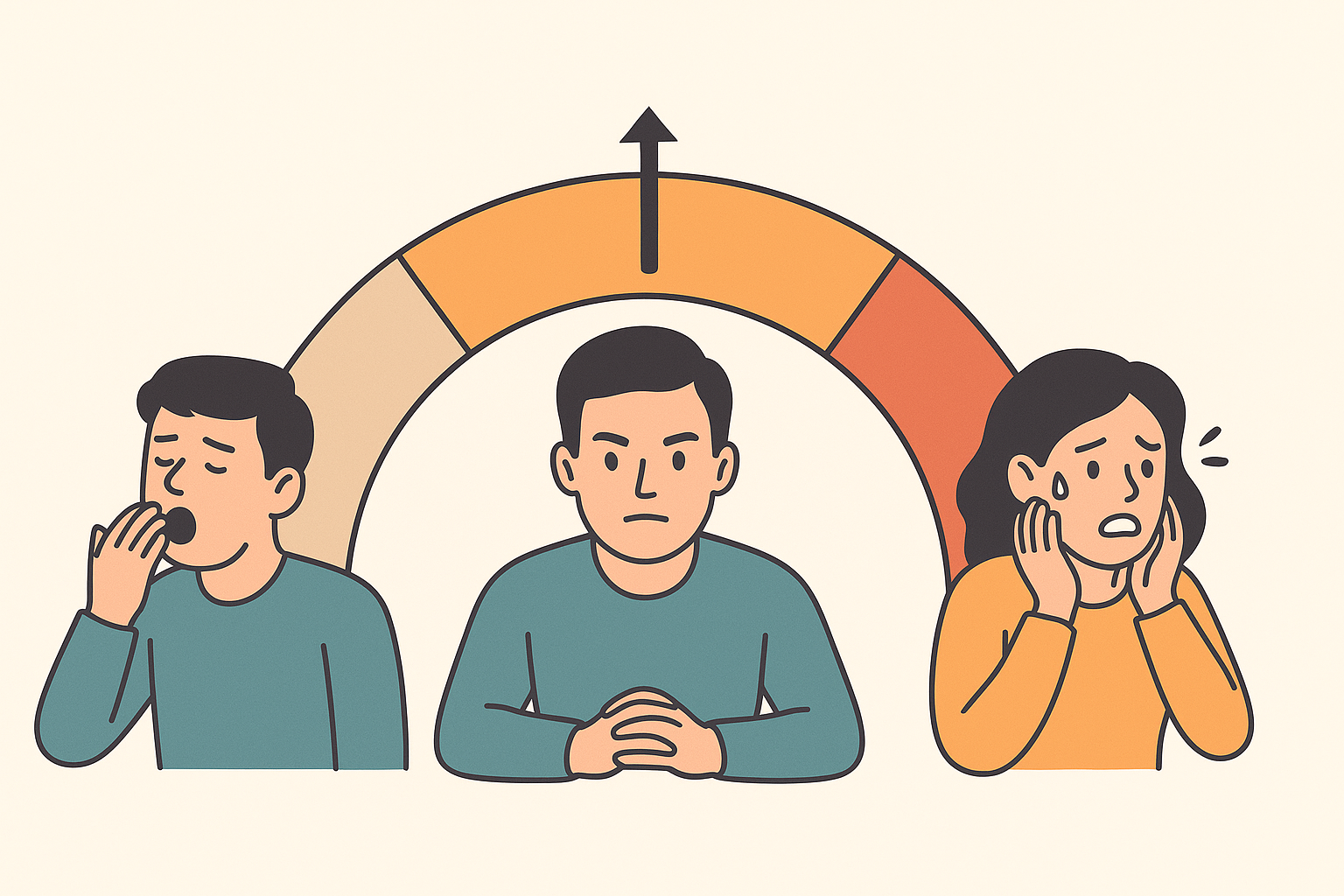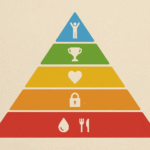You’ve probably had mornings when everything seems to fall into place. You wake up energized, your mind is clear, and each task flows effortlessly. And other days, even after a good night’s sleep, everything feels heavy—you move slowly, struggle to focus, and the world seems out of sync.
This change isn’t random. In psychology, it has a name: arousal.
What Arousal Is and How It Works in Your Body
Arousal is the level of physical and mental activation that regulates your ability to respond to what’s happening around you. Think of it as an invisible switch that adjusts your internal energy: sometimes it goes up, sometimes it goes down, and that shift influences how you think, feel, and act.
When arousal is low, calmness, slowness, and even apathy dominate. Your body is relaxed, but so is your mind—and that can reduce motivation.
When arousal is high, you feel tension, faster breathing, and racing thoughts. It’s useful in moments that require quick reactions but can become overwhelming if it lasts too long.
In the middle—at optimal arousal—your energy and focus align so you can perform at your best.
The Yerkes-Dodson Law: The Balance That Makes the Difference
In 1908, psychologists Robert Yerkes and John Dodson observed that performance doesn’t improve endlessly as activation increases. Instead, there’s a natural curve:
- With too little activation, performance is low because there’s no drive.
- With moderate activation, we reach our best performance.
- With too much activation, stress takes over and blocks us.
Think about a job interview: a bit of nervousness can sharpen your attention and responses, but if the tension skyrockets, you might go blank. On the other end, a lazy Sunday afternoon with nothing to do can be so calm that you end up feeling bored and unmotivated.
Examples of Arousal in Daily Life
Arousal isn’t just present in extreme situations—it’s there in everything you do:
- An athlete before a competition seeks the exact point between energy and calm.
- A student the night before an exam needs activation to review but without excessive anxiety.
- Someone watching a suspense movie feels their arousal rise with each tense scene.
These small shifts in your activation level are constant and shape how you experience your day.
How to Regulate Your Arousal and Feel Better
Although you can’t always control when your activation level rises or falls, you can influence it.
If your arousal is too high, try deep breathing, meditation, or a quiet walk to reduce tension. If it’s too low, boost it with exercise, upbeat music, or stimulating activities.
The goal isn’t to keep a fixed level all the time, but to know how to adjust your internal energy according to what you need at any given moment.
Listening to and Understanding Your Own Rhythm
Learning to recognize your arousal is learning to listen to yourself. It’s knowing when your body asks you to slow down and when it’s time to speed up. It’s not about fighting your internal energy, but working with it—tuning it like an instrument so it plays in harmony with your goals and well-being.
In our PsyLife channel video, you can find a simple and visual explanation of arousal—perfect to complement this article.




